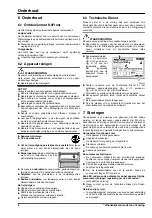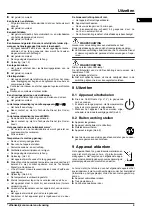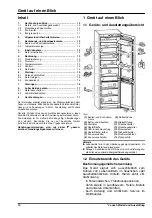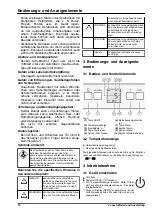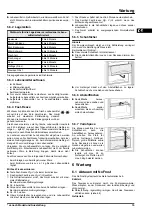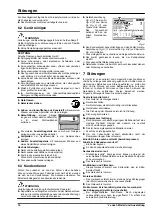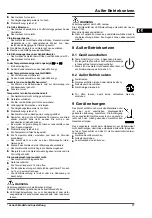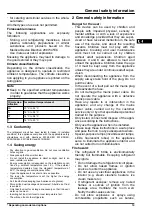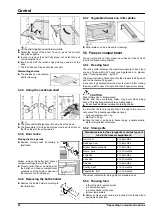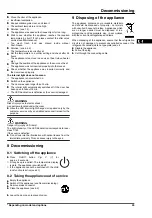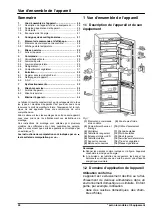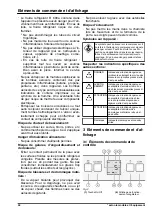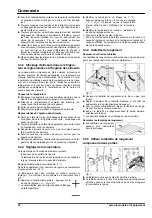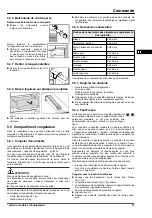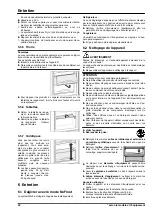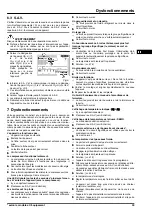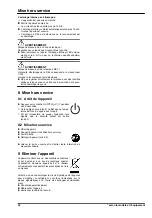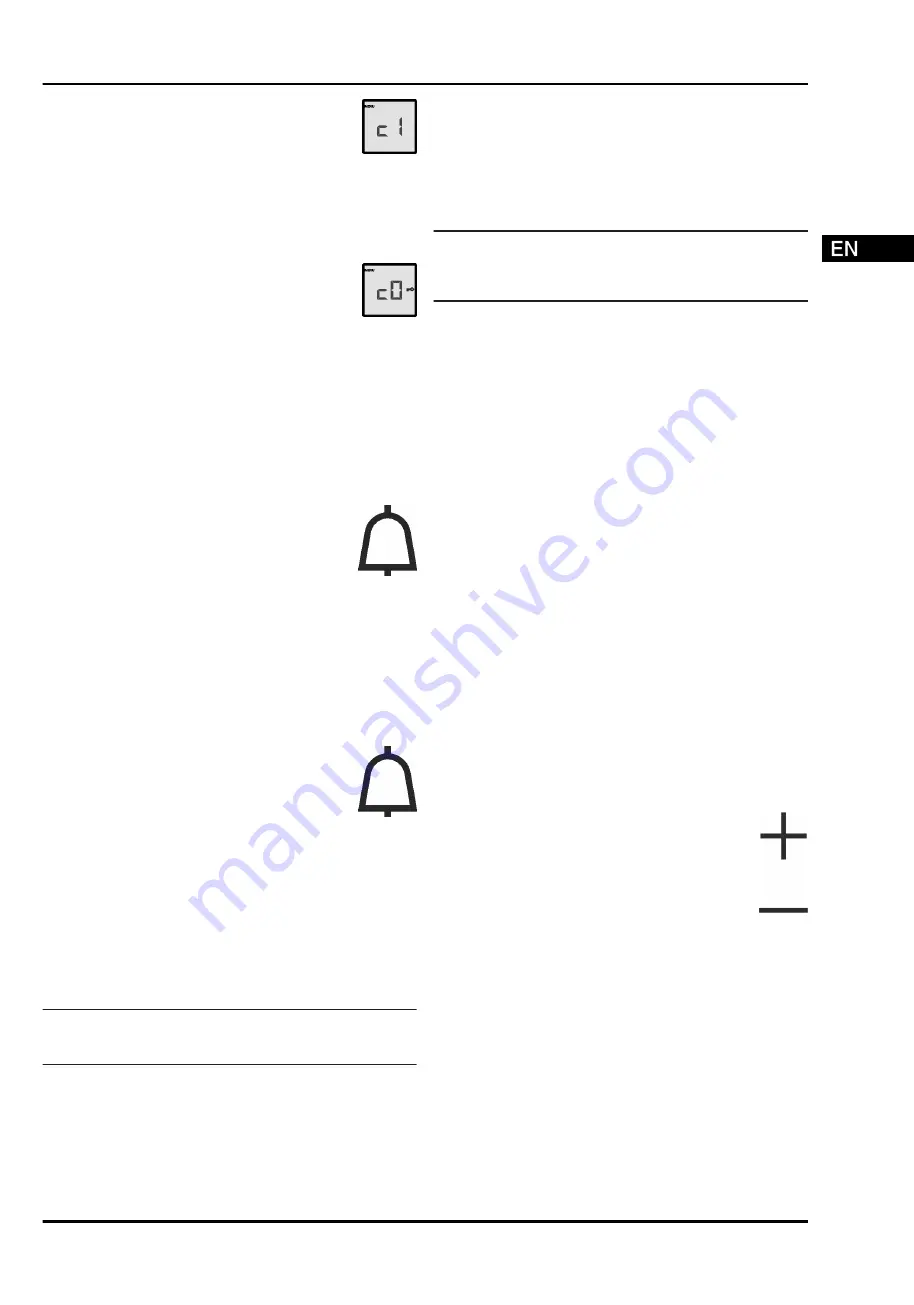
u
Briefly confirm using the Fast-Freeze button
Fig. 2 (4)
.
w
c1 flashes in the
display
.
u
Briefly confirm using the Fast-Freeze button
Fig. 2 (4)
.
w
The child lock symbol
Fig. 2 (10)
illuminates in the
display.
w
c flashes in the
display
.
w
The child lock function is switched on.
If the function is to be switched off:
u
Briefly confirm using the Fast-Freeze button
Fig. 2 (4)
.
w
c1 flashes in the
display
.
u
Briefly confirm using the Fast-Freeze button
Fig. 2 (4)
.
w
c flashes in the
display
.
w
The child lock function is switched off.
End setting mode:
u
Briefly press the ON/OFF button
Fig. 2 (1)
.
w
The temperature is displayed again in the temperature
display.
5.2 Door alarm
For the fridge and freezer compartments
An audible warning sounds if the door is open for
longer than 60 seconds.
The audible warning stops automatically when the
door is closed.
5.2.1 Muting the door alarm
The audible alarm can be muted when the door is open. The
sound switch-off function is active as long as the door is left
open.
u
Press alarm button
Fig. 2 (7)
.
w
The door alarm is silenced.
5.3 Temperature alarm
The audible alarm sounds if the freezer temperature
is not cold enough.
The temperature display and the alarm symbol
Fig. 2 (8)
flash at the same time.
The cause of the temperature being too high may be:
-
warm fresh food was placed inside
-
too much warm ambient air flowed in when rearranging and
removing food
-
power failure for some time
-
the appliance is faulty
The audible alarm is automatically silenced, the alarm symbol
Fig. 2 (8)
goes out and the temperature display stops flashing
when the temperature is sufficiently cold again.
If the alarm status persists: (see Malfunction).
Note
Food may be spoilt if the temperature is not cold enough.
u
Check the quality of the food. Do not consume spoiled food.
5.3.1 Muting the temperature alarm
The audible alarm can be muted. When the temperature is
sufficiently cold again, the alarm function is active again.
u
Press alarm button
Fig. 2 (7)
.
w
The audible alarm is silenced.
5.4 Refrigerator compartment
The natural circulation of air in the refrigerator compartment
results in zones differing in temperature. It is coldest directly
above the vegetable drawers and at the rear wall. It is warmest
at the top front of the compartment and in the door.
5.4.1 Food refrigeration
Note
The energy consumption increases and the cooling perform-
ance decreases if the ventilation is inadequate.
u
Always keep the air slits of the fan free.
u
Store perishable food such as ready-to-serve dishes, meat
products and sausages in the coldest zone. Place butter and
preserves in the upper area and in the door (see Appliance
at a glance).
u
Use recyclable plastic, metal, aluminium and glass
containers and cling film for wrapping.
u
Always store liquids and food which is subject to odour or
taste transfer in closed containers or cover them.
u
Foods which give off a large amount of ethylene gas and
delicate foods, such as fruit, vegetables, salad, should
always be stored separately or wrapped so as not to reduce
the storage life; e.g. do not store tomatoes together with
kiwis or cabbage.
u
Use the front area of the refrigerator compartment floor only
for briefly putting down cooled products, e.g. when rear-
ranging and sorting. However do not leave cooled products
there otherwise they may be pushed back or tipped over
when the door is closed.
u
Do not store food too close together to enable good air
circulation.
5.4.2 Setting the temperature
The temperature depends on the following factors:
-
the frequency of opening the door
-
the room temperature of the installation location
-
the type, temperature and quantity of the food
Recommended temperature setting: 5 °C
An average temperature of approx. -18 °C is then established
in the freezer compartment.
The temperature can be adjusted continually. Once the 1 °C
setting is reached, the sequence starts again at 9 °C .
u
Call up the temperature function: Press the "+/-"
setting button
Fig. 2 (3)
.
w
The previously-set value will flash in the tempera-
ture display.
u
Change the temperature in 1 °C steps: Press the
"+/-" setting button
Fig. 2 (3)
until the required
temperature is indicated in the temperature
display.
u
Change temperature continually: hold down
setting button.
w
During adjustment the value flashes on the display.
w
The new setting is adopted approx. 5 seconds after the last
time the button was pressed and the set temperature
displayed again. The temperature in the interior gradually
adjusts to the new value.
5.4.3 Shelves
Moving or removing shelves
The shelves have stops preventing them from being uninten-
tionally pulled out.
Control
* Depending on model and options
21
Summary of Contents for 655096
Page 35: ......


